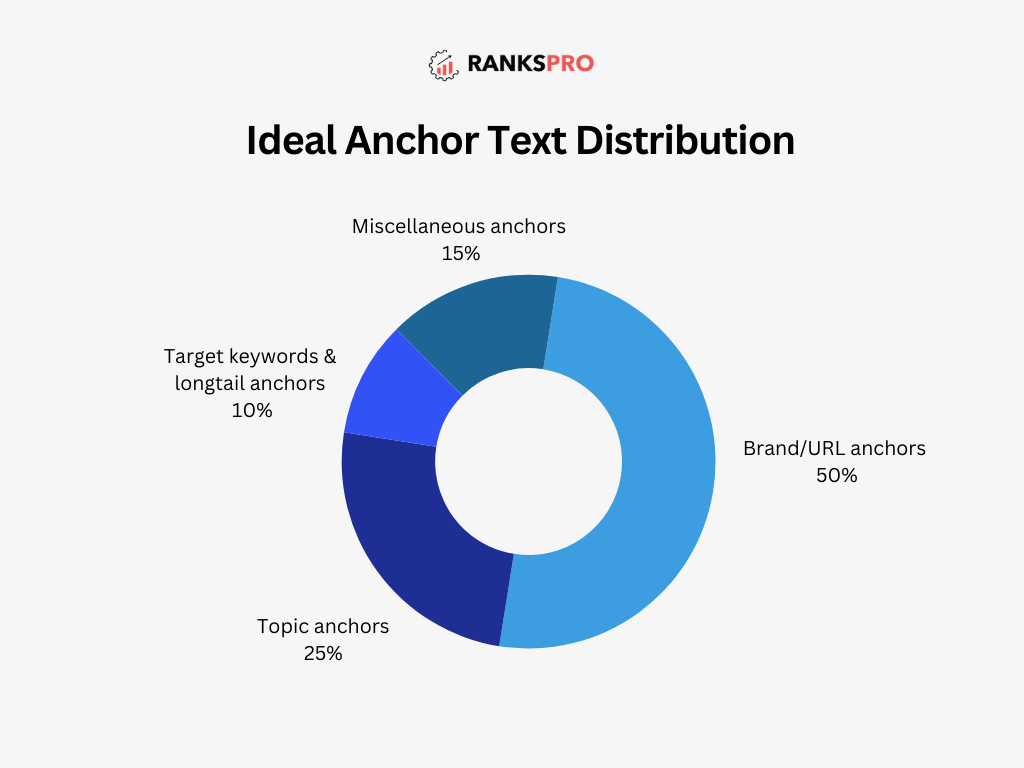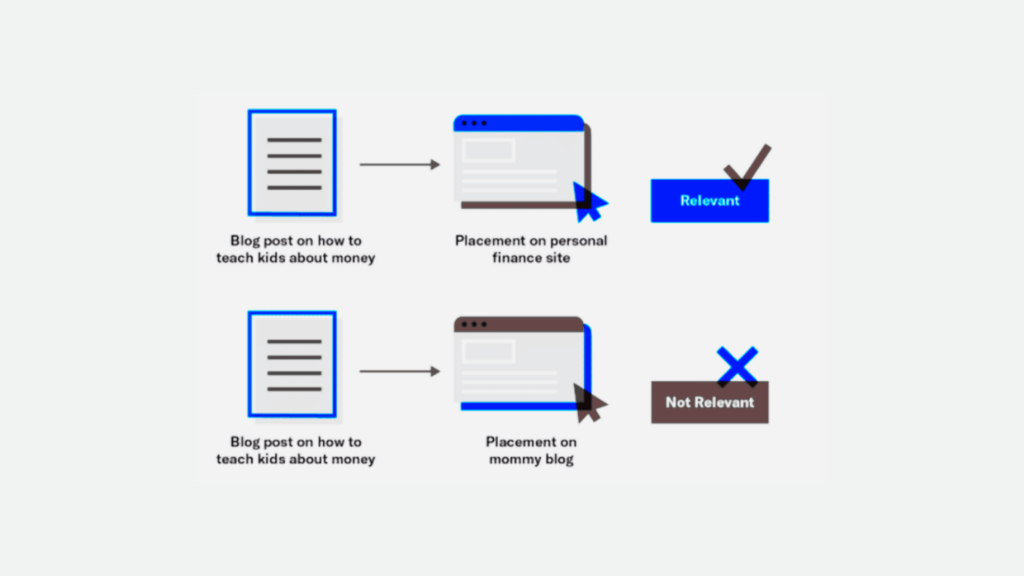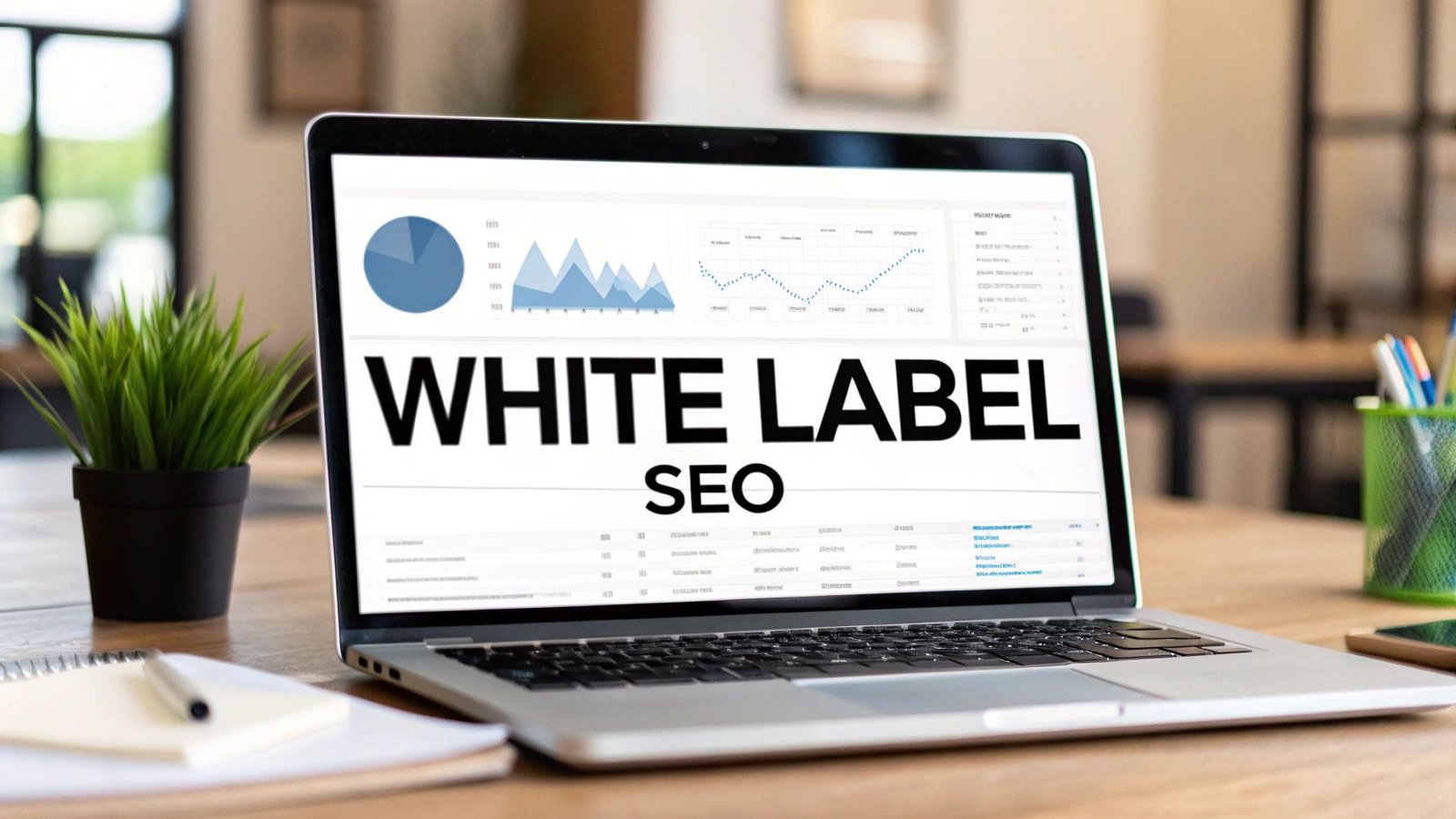In SEO, anchor texts are essential; however, many businesses and digital marketers overlook them. Anchor texts are clickable words or phrases in a hyperlink that not only direct users to relevant content but also inform search engines about the context and significance of the linked pages.
When used correctly, anchor texts can enhance website navigation, improve your rankings, and boost SEO performance. Conversely, improper use of anchor text, irrelevant links, or excessive reliance on exact-match anchors can lead to penalties from search engines, which can negatively affect one’s rankings.
In this article, we will explore anchor text, its importance in SEO, the various types of anchor text, best practices for their use, common mistakes related to their usage, and strategies for utilizing anchor text to enhance search visibility.
This guide, whether for a beginner seeking to understand anchor texts or an SEO expert looking to refine their link-building strategy, will provide everything needed to leverage anchor text effectively.
What is Anchor Text?
Anchor text is so disapproved by many people and yet important because it is defined as the visible and clickable text in a hyperlink. It, however, serves a different function in web navigation where the user might have to search for one web page from another.
A clear understanding of what constitutes this part of a hyperlink, how it is coded in HTML, why it is important, and how it can be applied in real life is significant for good SEO practices as well as excellent user experience.
Simply put, anchor texts are the phrases that users click on to move to another webpage. These phrases are linked to other web pages or content through dedicated URLs. URLs aren’t visible as they are linked to the phrases to take the users to the actual destination. The user sees descriptive text indicating the linked content, instead of a raw URL.

How it Appear in HTML (<a href=””>) Format?
Anchor text is created using the HTML anchor tag (<a>). Here’s how it appears in the code:
<a href=”https://www.example.com/page”>Anchor Text Here</a>
- <a>: This is the opening tag of the anchor element, signaling the start of a hyperlink.
- href=”https://www.example.com/page”: This attribute specifies the destination URL of the link. The URL can be an absolute path (as shown) or a relative path.
- Anchor Text Here: This is the visible, clickable text that users see and interact with.
- </a>: This is the closing tag of the anchor element, indicating the end of the hyperlink.
In a simple browser, only “Anchor Text Here” gets displayed as clickable text, usually underlined and colored.
Why Are Anchor Texts Important for SEO?
An anchor text is more than just a mere navigational text. These are important signals to the search engines and users in regards to visibility, user experience, and ultimately SEO performance.
Here are some major factors that show the significance of using and optimizing anchor texts for SEO:
1. Google Uses Anchor Texts to Understand Page Content
The analysis of anchor texts by Google’s algorithm is a vital aspect in gauging the context and relevance of the linked page. A website that links to another page using descriptive anchor text helps Google by giving the latter important information about what the former is all about.
Google determines the subject matter and topics talked about on the linked page by analyzing the anchor text. In this, Google can categorize and index the pages better.
For instance, if several pages use “best organic coffee beans” to link to a certain page, Google takes it to refer that the page would be related to organic coffee beans.
Through this, Google understands the context of a page when the content on it is not very well optimized. It also gives Google some idea of the relevancy of a page to a specific search query.
2. Influence on Search Rankings and Keyword Relevance
Though over-optimization can be bad, well-targeted keyword strategizing in anchor text will improve search visibility. Anchor texts are terms or phrases that link to another place in the same or another document. These keywords signal search engines about the topics and themes that are affiliate pages.
However, Google prefers anchor text natural and relevant. One should not use exact match keywords in an exaggerated measure as Google might view such as manipulative. The best method would be to have a natural blend of anchor texts. Combine branded anchor text, URLs, and partial match anchor text.

For both link pages and anchor pages, the relevancy of anchor texts is important. Hence, Google favors those links that afford them little contextual, decent information.
3. User Experience Benefits – Helping Users Navigate Effectively
Anchor text is essential in augmenting user experience with pertinent information about the destination of a link. Descriptive anchor text enables users to know where they are headed should they click on it, thus aiding their navigation and understanding.
Well-written anchor text also helps those who are visually impaired and dependent on-screen readers find their way. Generic anchor texts like “click here” or “read more” provide little context and can confuse users.
Good descriptive anchor text provides a much better user experience; for example, the phrase “learn more about SEO strategies” would do wonders as compared to anything generic. A good anchor text keeps users hovering on your site, thus keeping your bounce rate low.
4. Anchor Texts & Link Equity (PageRank Distribution)
Anchor text somewhat affects the flow of link equity (or “link juice”) between sites. When a press links to a website, some of its authority is imparted to the website doing the linking. The choice of anchor text will influence this authority distribution.
With relevant anchor text, you can signal a linked page’s relevance to specific topics and improve its ranking. But the linking site’s authority is also an important factor. A link coming from a highly authoritative site with relevant anchor text will matter more than a link coming from a site with low authority.
Types of Anchor Texts
Anchor text diversity is a critical feature of a natural, straightforward, and successful link-building strategy. Being aware of the different forms of anchor text and their varied applications enables you to fine-tune your website for search engines as well as for users.
Here are the types of anchor texts you should utilize:
1. Exact Match Anchor Text
Exact match anchor text contains the exact word or phrase related to the content of the linked page. It sends a clear and direct signal to search engines about the linked page.
However, the overuse of this exact match anchor text creates the idea of manipulation, which may eventually lead to penalties. Hence it should be used sparingly and strategically, especially if applied to competitive keywords.
Example: Link directly “digital marketing services London” to the page that provides digital marketing services London.
2. Partial Match Anchor Text
Partial match anchor text consists of various related terms or phrases that are similar to the target keyword. It adds context and relevance but is not particular. It is more organic and visitor-friendly than linking. It can work to fill a gap in your anchor text profile preventing over-optimization.
For example, linking wide marketing strategies to a page about different marketing strategies.
3. Branded Anchor Text
Branded anchor text is the clickable text that results in a link to your company or website name. Naturally, it creates a basis for traffic directly sent to your website while establishing a brand to be recognized.
That is because it forms a natural part of a diverse anchor text profile; Establishing your brand’s presence and its domain authority on search engines.
For example, linking “[Company name] services” to a page that describes the services that the company provides.
4. Naked URL Anchor Text
This type of anchor text is just the bare URL of the page that is being linked to. It does not give much context, making it less preferred and visually unappealing.
In some cases, the use of this form is important, such as when linking to particular files or in informal contexts. It is the least optimized kind of anchor text.
Example: Linking “https://www.yourdomain.com/blog/seo-guide” directly.
5. Generic Anchor Text
Usually, generic anchor text gives vague actions that do not describe the actual words of the present document. It does not offer much about the content inside the linked page.
Generic anchor texts are mostly discouraged as they add very little to SEO values and ultimately can confuse the average user. It is preferable to use descriptive anchor text giving context and relevancy.
Example: “Visit website” is a generic anchor text.
6. Image Anchor Text
Image anchor text converts the image into a clickable link. The “alt text” attribute of the image is the equivalent of the anchor text. It is helpful for accessibility and SEO purposes, especially for image-heavy pages.

Image anchor text must use descriptive and relevant alt text so that search engines and users with visual disabilities have the context.
Example: An image of a digital marketing report with alt text “digital marketing report download” linking to a download page.
7. LSI & Semantic Anchor Texts
This type of anchor text is the use of terms and concepts which are related to the target keyword. They infer context and relevance based on synonyms, related phrases, and co-occurring terms.
These diversifying anchor texts will help you to keep away from over-optimization, for they are semantically oriented-the very area being pursued by Google.
Example: If the target keyword is “content marketing,” LSI/semantic anchor texts might include “content strategy,” “inbound marketing,” or “audience engagement.”
Best Practices for Using Anchor Texts
Anchor text optimization is a delicate balance between providing clear signals to search engines and maintaining a natural, user-friendly experience.
Here’s a comprehensive guide to best practices:
1. Keeping Anchor Text Contextual and Topic-Related
The anchor text should always directly relate to the content of the page linked. It indicates to users what they shall find when the link is clicked upon.
Using anchor texts from generic lists might only confuse users and dilute search engines’ relevance signals. Thus, always consider the context of and the content surrounding the anchor text. Make sure it flows from and into the content logically and naturally.
For instance, use anchor texts like “mobile SEO tips” or “optimizing for mobile” for linking to a page dealing with “mobile SEO.”
2. Avoiding Over-Optimization & Keyword Stuffing
Over-optimization of anchor text with exact-match keyword stuffing will, in all likelihood, earn the wrath of search engines and be penalized. Therefore, pay attention to maintaining an entirely natural placement and a diverse anchor text profile.
Do not repeat the same anchor text for every link pointing to your website, especially for highly competitive keywords. Choose various types of anchor texts: branded words, partial-match words, and LSI words.
A relevant example is: instead of saying “best digital marketing agency” for every anchor text leading to links for your agency website, you may consider other terms like “our digital marketing team,” “digital marketing services,” or your brand name.
3. Integrating Anchor Texts Organically in Content
Anchor text should flow naturally into your context, with a seamless blend into the surrounding text. Do not stuff anchor text with keywords; it only mars the reading experience.
Such anchor text should improve the reading and flow of your content. Anchor texts must be grammatically correct and syntactically fit.
Example: Instead of writing “for SEO services click here” try “to learn more about our SEO services, visit our website”.
4. Using Anchor Texts for Site Structure & Hierarchy
The site structure and hierarchy are dependent on anchor text. Use descriptive anchor text to link important pages like category pages or product pages or link cornerstone content.
An internal link architecture that encourages users and search engines to move around your site logically is the basis for ensuring that the site works properly. Use anchor text to facilitate related content and navigation.
Example: Use category keywords to link to your category pages from relevant blog posts.
5. Proper Usage for Outbound Links & Backlinks
Using the correct anchor text when linking to outbound sites is linking the anchor text to what the link page talks about. The domain should also not link low-quality or unrelated websites because it can give a negative reputation to your website.
The anchor text should provide the context and twist to your readers. For backlink purposes, even for other websites, the anchor text they should be using should appear natural and relevant. The next thing is to check your backlink profile, checking for the toxic and spammy anchor text.
6. Balancing Different Types of Anchor Texts
Having a rich anchor text profile is essential in achieving a natural and effective linking-building strategy. This mix will invariably include exact-match, partial-match, branded, naked URL, and, LSI keywords.

Any sort of anchor text should not be depended upon too excessively. Make an anchor text profile analysis at regular intervals and adjust accordingly.
7. Using Anchor Texts Strategically in Guest Posts & Link-Building
Always use anchor text in guest posting or link building that relevantly relates to the target site and the content you have created. Avoid overstuffing on exact match keywords because it can easily raise a red flag.
Rather, focus on providing value to the said website and its audience. Use branded anchor text, URL Linking, and partial match keywords.
8. Optimizing for Featured Snippets & Voice Search
Place long-tail keywords or conversational phrases as the context within the anchor text to be optimized for featured snippets and voice searches. Optimize FAQ pages, and question-based anchor text to link those pages.
Create anchor text that answers frequently asked questions, concise, and clear, with schema markup that will provide structured data to search engines.
Example: Instead of “SEO services,” use “Where can I find SEO services near me?”
Common Anchor Text Mistakes to Avoid
Anchor text, while powerful, can also be a source of SEO problems if not used correctly. Here’s a breakdown of the common mistakes you should avoid:
1. Overusing Exact Match Keywords
A few years back, most marketers aimed to use exact-match keywords to stuff anchor texts. This was one of the tricks to manipulate search engine rankings. However, such practices have since faced severe repercussions thanks to the updates in the Penguin algorithm from Google.
The overuse of exact-match anchor text can easily get your link profile labeled as unnatural and spammy, thereby getting you penalized. Google sees this as an attempt to manipulate search results rather than provide a real user experience.
The Penguin algorithm identifies and downgrades unnatural link patterns, including the overuse of exact-match anchor text. Maintaining a natural link profile is critically important.
For example, using “best digital marketing agency in New York” as anchor text for links directed to your agency site time and again would be bad practice. Instead, use a mix of branded, partial, and LSI keywords.
2. Spammy & Manipulative Anchor Texts
Banned and naturally-forced anchor texts are ones that primarily are aimed at outcasting the search engine itself as well as the users. This includes irrelevant and unrelated anchors, hidden anchors, or participating in link schemes.
These types of behaviors may lead to horrible penalties of de-indexing and blacklisting; hence, avoid anchor text that is out of context to the destination page or surrounds text related to it. Avoid anchor texts that trick good users into clicking a link.

An example would be the use of anchor text “Free iPhone” linking to a car-parts-selling site. Always place maximum importance on providing real value and experience to the users.
3. Too Many Generic or Irrelevant Anchors
Generic anchor text types like “click here,” “read more,” or “learn more” don’t really give much information about the page being linked to. The use of irrelevant anchor texts, linking to say, a page about SEO from a page on cooking recipes, is just as damaging.
These forms of anchor text miss out on great opportunities of sending valuable signals to search engine users. Also, they may make it seem that your link profile looks immaterial.
The use of generic anchor text would dent your internal link structure and pose a great challenge to search engines in crawling your site. So, it’s always a good practice to use relevant and descriptive anchor text that complements the linked page’s content.
4. Ignoring Alt Text in Image Links
With images serving as links, the assigned “alt text” attribute does adjoin itself as anchor text texting. Deceiving or simply adding generic alt text means a missed opportunity to provide some context and enhance accessibility.
For alt text, describe the image accurately while rendering relevant information about the linked page. This becomes very crucial for the blind, who use screen readers to receive the alt text. In SEO, it also serves as alt text since search engine crawlers can’t see images.
Take, for example, don’t write “image.jpg” as the alt text; it should say “digital marketing report download” for an image linking to a report download page.
Track Anchor Text Issues with RanksPro
Anchor text is an integral part of your SEO strategy, but can cause problems if not used properly. RanksPro helps you to monitor and rectify anchor text issues proactively for a healthy and natural link profile.
Here is how RanksPro can help in tracking anchor text issues:
- In-Depth Backlink Analysis: RanksPro provides more comprehensive information regarding the backlink profile in the analysis, anchor text used per link, etc. Even if quickly able to view all the inbound links on your site with the exact anchor text, you must fish with no hook.
- Toxic Link Detection: Identify potential toxic or spam backlinks that could hurt your website domain’s reputation. Examples refer to links from low-quality websites or those that use manipulative anchor text.
- Anchor Text Distribution Monitoring: Track fluctuations in anchor text distribution over time. Pinpoint sudden rises in generic or exact-match anchor text—these may signify a problem. Use it to analyze the gradual evolution of your anchor text profile.
- Competitor Anchor Text Analysis: Research competitors’ anchor text profiles to unveil their playbook. Trace link-building opportunities and dig into industry trends. Analyze what anchor text is on the move for your competitors against your targeted keywords.
- Reports & Alerts: Prepare exhaust reports on your anchor text profile, emphasizing areas of concern. Set up alerts to notify you of any substantial changes in your backlink profile or anchor text distribution.
With RanksPro, you can take control of your anchor text strategy and ensure a strong foundation for your SEO success. Sign up for free today and leverage next-gen SEO features for enhanced organic growth.




